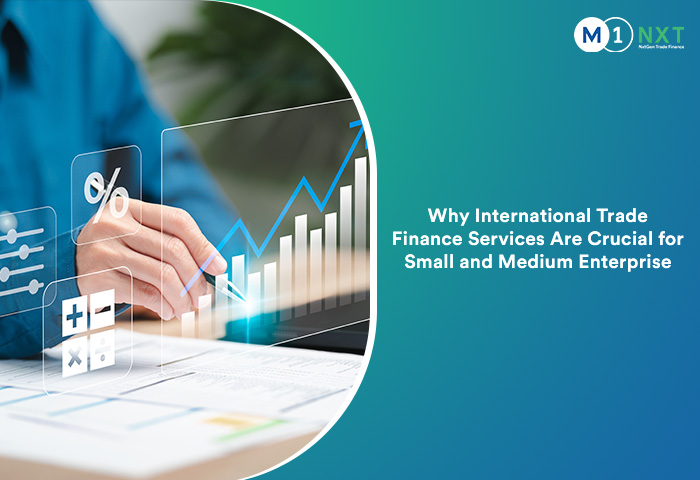8 Common Misconceptions About Export Credit
Here
are eight widespread myths:
- Export Credit is Only for Large Corporations
The
misconception that exports credit is only for large corporations stems from a
few factors:
●
Complexity: The application process for
export credit can seem complex, and many businesses can believe that they lack
the resources or expertise to navigate it.
●
Large transactions: Some export credit
programs can have minimum transaction requirements that can be prohibitive for
smaller businesses.
●
Focus on large companies: Historically,
export credit programs were heavily focused on supporting large corporations.
 |
8 Common Misconceptions
About Export Credit |
- Export Credit is Too Expensive
The
misconception that exports credit is too expensive can be influenced by several
factors:
●
Unfamiliarity with costs: Sometimes,
MSME are not fully aware of the specific costs involved in export credit, such
as fees, interest rates, and insurance premiums.
●
Comparison to other financing options:
Businesses may compare export credit to other financing options, such as bank
loans, and obviously find the costs to be higher.
●
Perceived complexity: As mentioned
before, the application process for export credit can seem complex.
In
reality, there are various financing options available, including short-term
and long-term credit, with competitive rates and terms.
- Export Credit is Difficult to Obtain
This
reason behind it is:
●
Bureaucracy: There are situations in
which businesses usually have negative experiences with government bureaucracy.
This led them to believe that obtaining export credit would be a lengthy and
cumbersome process.
●
Limited access to information: There are
many businesses that do not have access to the necessary resources or even
information to navigate the export credit process effectively.
Other
than these, complexity and unfamiliarity have also made a significant
contribution to solidifying this myth.
But
the fact is that many export credit agencies and financial institutions help
and support businesses throughout the application process.
- Export Credit Only Covers Political Risks
It
is a myth that export finance is limited to covering political concerns. Even
if export credit insurance against political risk is a popular choice, it's not
the only one.
Export
credit can also cover risks, such as:
●
Buyer insolvency
●
Protracted default
●
Contract disputes
●
Currency fluctuations
●
Force majeure events
- Export Credit is Only for Goods
The
historical emphasis on physical items is the source of the myth that export
finance is exclusively available for goods. But things are quite different in
this globalised economy. Export credit can be used to finance the export of
both goods and services.
There
is a noticeable increase in the demand for services as the world economy
develops. For companies that export services, export credit may be a useful
instrument for managing cash flow, reducing risks, and reaching new markets.
- Export credit is only available for developed markets
It
is a myth that export finance is exclusively accessible to developed markets.
This myth has been fuelled by the following reasons:
●
In the past, the focus was on
developed markets.
●
Some businesses may perceive
greater risks associated with exporting to developing markets.
●
Less awareness about various
export credit programs and support mechanisms
However,
the reality is that export credit can be a valuable tool for businesses
exporting to any market. Many governments have programs specifically designed
to support exports to emerging and developing economies, providing financing,
risk mitigation, and other incentives.
- Export credit is a guaranteed source of financing.
There
is a misperception that export credit is a guaranteed way to get money. But in
actuality, the approval process for export financing is not always assured. It
depends on various factors, including the creditworthiness of the buyer and the
exporter, the nature of the transaction, and the country risk.
- Export credit is only for first-time exporters.
It
is a myth that export finance is exclusively available to new exporters. It's
possible that certain export credit organisations have initiatives created
specially to assist new exporters, giving the impression that they are only
available to novices. Export credit schemes are accessible to seasoned
exporters as well as new ones.
So,
here are eight myths and their busters. Now, time for some more information on
export credit.
Export Credit Guarantee
Export credit guarantee
(ECG) is a specific type of export credit that
provides insurance protection against the risk of non-payment from foreign
buyers.
Export credit guarantee
solutions are offered by various organisations,
including:
●
Export Credit Guarantee
Corporation of India (ECGC):
●
Banks and Financial
Institutions
●
Insurance Companies
M1
NXT is a cutting-edge platform that provides innovative trade finance solutions
for businesses involved in international trade. It is into export financing for small businesses
and other enterprises.
It
provides efficient export factoring solutions, allowing
businesses to convert their unpaid export invoices into immediate cash,
improving their cash flow and working capital.
Conclusion
There
are many myths related to export credit that discourage many businesses from
even thinking about it. Export credit is an effective financial solution for
businesses venturing into international trade. Dispelling misconceptions about
this tool empowers businesses to harness its benefits for global expansion and
growth. M1 NXT's innovative trade financing options enable businesses of all
scales to utilise export credit to unlock international opportunities and
ensure success in the global marketplace. Embark on your global journey with
the advantages of export credit today!



Comments
Post a Comment